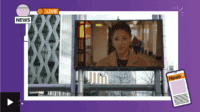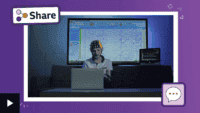Social media is changing the way we get
our news fake news can be found embedded
in traditional news social media or fake
news sites and has no basis in fact but
is presented as being factually accurate
this has allowed hackers controls even
politicians to use the net to spread
disinformation online our children can
struggle to separate fact from fiction
thanks to the spread of fake news here
are some basic strategies to help them
develop critical digital literacy talk
to them children rely more on their
family than social media for their news
so talk to them about what is going on
read many people share stories who don't
actually read encourage your kids to
read beyond the headline check teach
children quick and easy ways to check
the reliability of information like
considering the source doing a search to
double-check the author's credibility
seeing if the information is available
on reputable sites and using credible
fact-checking websites to get more
information
get involved digital literacy is about
participation teach your kids to be
honest vigilant and creative digital
citizens fake news spreads
misinformation and anxiety among
schoolchildren but they are more
literate and resilient than you might
think if we give them the tools to tell
that foundation their digital literacy
will make the Internet a great place for
us all to find out what is going on in
the world
`{`Music`}`




